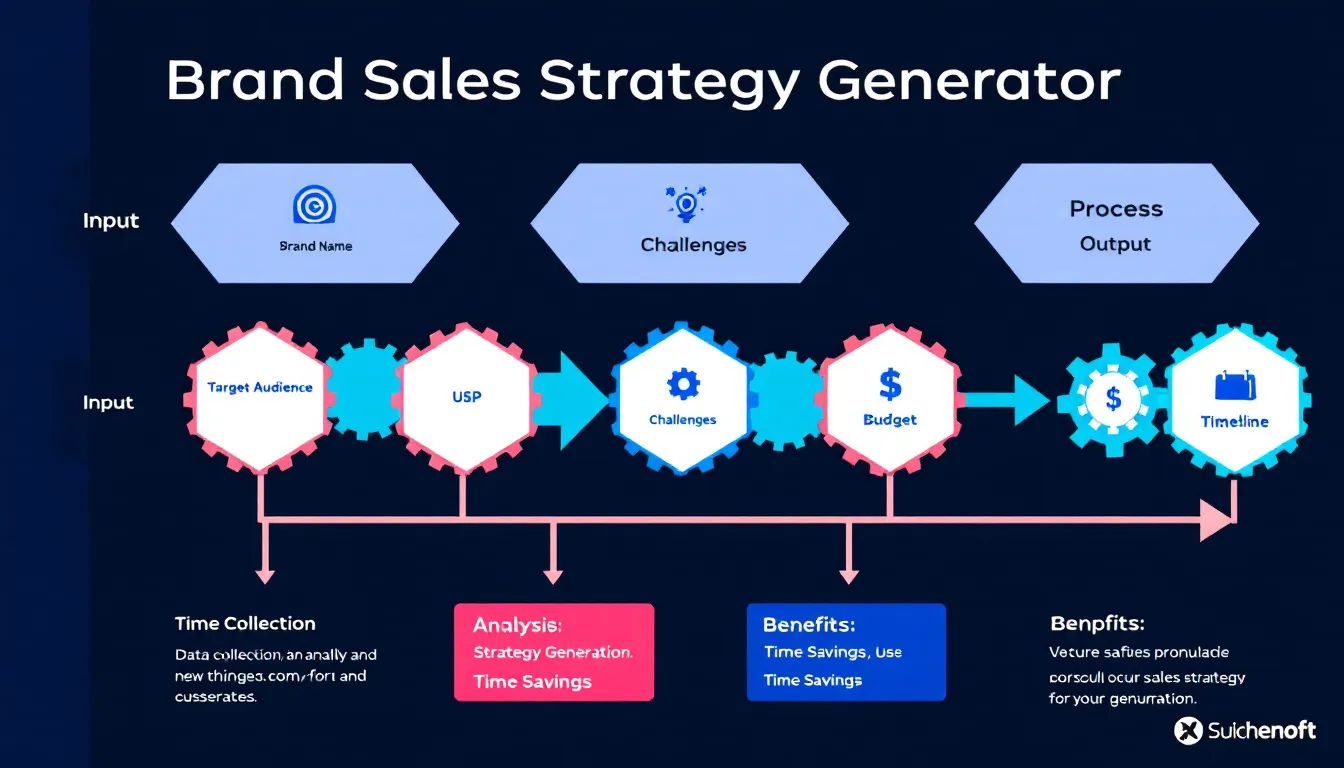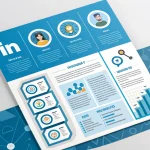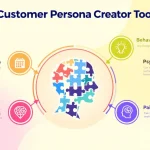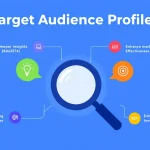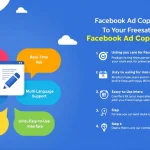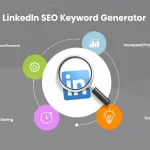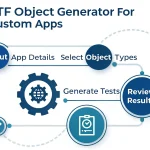Is this tool helpful?
How to Use the Brand Sales Strategy Generator Effectively
Our Brand Sales Strategy Generator is designed to create customized marketing strategies based on your specific business inputs. Here’s a detailed guide on how to use each field:
Field-by-Field Guide:
- Brand Name: Enter your company or brand name. For example: “Eco Warrior Apparel” or “TechFlex Solutions”
- Target Audience: Describe your ideal customer profile in detail. Consider including:
- Demographics (age, gender, location)
- Psychographics (interests, values, lifestyle)
- Behavioral patterns (shopping habits, media consumption)
- Unique Selling Propositions (USPs): List your brand’s distinctive features and competitive advantages
- Main Challenges: Detail the obstacles your brand faces in the market
- Marketing Budget: Input your available marketing funds (optional)
- Implementation Timeline: Specify your desired strategy execution period (optional)
Understanding the Brand Sales Strategy Generator
The Brand Sales Strategy Generator is an advanced tool that combines market intelligence with strategic planning to create comprehensive sales approaches tailored to your business needs. It analyzes multiple variables to develop actionable marketing strategies that align with your brand objectives.
Core Components of Strategy Generation:
- Market positioning analysis
- Competitive differentiation strategies
- Channel optimization recommendations
- Customer engagement tactics
- Resource allocation suggestions
Benefits of Using the Brand Sales Strategy Generator
1. Time and Resource Optimization
The generator significantly reduces the time needed to develop a comprehensive sales strategy, allowing you to:
- Save countless hours of market research
- Eliminate the need for expensive consulting services
- Focus resources on strategy implementation rather than planning
2. Data-Driven Decision Making
The tool processes inputs to provide:
- Evidence-based strategic recommendations
- Market-tested tactical approaches
- Measurable success metrics
3. Customized Strategy Development
Each generated strategy is uniquely tailored to:
- Your specific industry context
- Target audience characteristics
- Available resources and constraints
Practical Applications and Solutions
Example Case Study 1: E-commerce Startup
Input Parameters:
- Brand Name: GreenLeaf Essentials
- Target Audience: Environmentally conscious millennials, 25-40 years old, urban professionals
- USPs: Plastic-free packaging, carbon-neutral shipping, organic ingredients
- Challenges: Limited brand recognition, high competition in sustainable products
- Budget: $25,000
- Timeline: 6 months
Example Case Study 2: B2B Software Company
Input Parameters:
- Brand Name: DataFlow Analytics
- Target Audience: Mid-size enterprises, IT decision-makers, financial sector
- USPs: AI-powered insights, seamless integration, 24/7 support
- Challenges: Long sales cycle, technical complexity, market education
- Budget: $100,000
- Timeline: 12 months
Strategy Implementation Framework
1. Market Analysis Phase
- Competitor mapping
- Market opportunity assessment
- Customer persona development
2. Strategic Planning Phase
- Channel selection and prioritization
- Message development and positioning
- Resource allocation planning
3. Implementation Phase
- Timeline development
- KPI setting
- Action plan creation
Best Practices for Strategy Execution
1. Pre-Implementation Checklist
- Validate target audience assumptions
- Confirm resource availability
- Align stakeholder expectations
2. Monitoring and Adjustment
- Track key performance indicators
- Gather customer feedback
- Iterate based on results
Frequently Asked Questions
Q: How detailed should my target audience description be?
A: Include specific demographic details, psychographic characteristics, and behavioral patterns. The more detailed your description, the more targeted your strategy will be.
Q: Can I generate multiple strategies for different market segments?
A: Yes, you can create separate strategies for different segments by running the generator multiple times with varied target audience parameters.
Q: How should I prioritize the recommended strategies?
A: Focus on strategies that align with your immediate business goals and available resources. Consider implementing high-impact, low-resource strategies first.
Q: What makes a good USP description?
A: Focus on specific, measurable advantages that directly benefit your target audience. Avoid generic statements and highlight unique features that competitors can’t easily replicate.
Q: How often should I update my sales strategy?
A: Review and update your strategy quarterly, or whenever significant market changes occur that affect your business environment.
Q: Can I modify the strategy after generation?
A: Yes, the generated strategy serves as a foundation that you can adapt based on your specific needs and market responses.
Q: Should I include my current market position in the challenges section?
A: Yes, including your current market position helps the generator create more relevant and effective strategies for your situation.
Maximizing Strategy Effectiveness
Key Success Factors
- Regular strategy review and adjustment
- Clear communication with stakeholders
- Consistent brand messaging across channels
- Measurable goal setting
- Resource optimization
Common Implementation Pitfalls to Avoid
- Insufficient resource allocation
- Inconsistent execution
- Poor internal communication
- Lack of measurement mechanisms
Important Disclaimer
The calculations, results, and content provided by our tools are not guaranteed to be accurate, complete, or reliable. Users are responsible for verifying and interpreting the results. Our content and tools may contain errors, biases, or inconsistencies. We reserve the right to save inputs and outputs from our tools for the purposes of error debugging, bias identification, and performance improvement. External companies providing AI models used in our tools may also save and process data in accordance with their own policies. By using our tools, you consent to this data collection and processing. We reserve the right to limit the usage of our tools based on current usability factors. By using our tools, you acknowledge that you have read, understood, and agreed to this disclaimer. You accept the inherent risks and limitations associated with the use of our tools and services.
